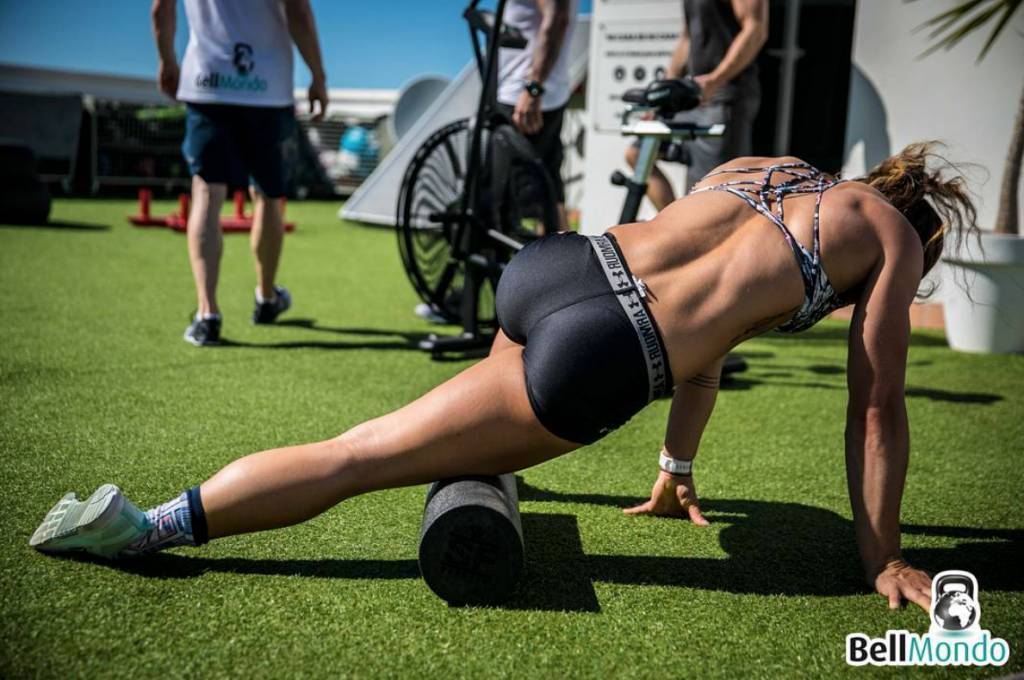You have probably seen them: the memes about impossible stairs after legday and the challenge of decent butt wiping after a toilet visit when you just had a heavy upperbody day. Although many of you undoubtedly love the phenomenon of muscle pain, it can be quite annoying. Especially if you can not fully perform the next day due to the muscle pain of the previous training. That is why we have put five tips together for you to help your body recover from your workouts.
Before we start with the tips, we first give a brief explanation of what muscle pain exactly is. Muscle pain is caused by a 'microtrauma' of the muscle fibers and connective tissues. That sounds like serious business, but in fact it is nothing more than a natural result of muscle breakdown that occurs during heavy training sessions. These small "cracks" cause pain due to the slight inflammation that occurs when the body works to repair it. This process can take several days, so that explains why it can take 24-48 hours before you feel any muscle pain at all.
After this period, however, the muscle has completely recovered and through this process the muscle has become stronger. Muscle pain is a normal process, but that does not mean that it isn't annoying. We have written some the most effective ways to reduce muscle pain below.
1. Warming up
It sounds so logical and yet a good warm-up is often overlooked. Not only because of factor time, but also because there are quite a few discussions about what exactly is a good warming up. Is it mainly stretching? Or are burpees a good way to warm up the body? The answer is this: during your warming up you perform movements that reflect what you will train that day. This again sounds very logical, but the implementation often leaves much to be desired. Suppose you focus that day on training the lower body, then you combine dynamic movements of the lower body with dynamic stretches of the lower body. For these movements, resistance bands are a valuable addition!
A warming up like that costs on average ten minutes of your time, but it can help you with becoming less sore afterwards.
2. Eat enough protein
We have discussed above that muscle pain is caused by the body's recovery of the microtrauma of the muscle fibers. In order to be able to restore this trauma, the body needs sufficient amino acids. Amino acids are the building blocks of proteins. Research shows that protein immediately before and after training can alleviate muscle pain.
To keep things simple, focus on consuming protein sources in combination with healthy amounts of carbohydrates and fat. If you meet your calorie needs with balanced meals, you will easily eat enough protein. Are you struggling with this? Then chew on a few pieces of beef jerky with nuts and dried fruit. Or take some chicken / turkey with an apple. Your favorite protein shake is of course also an option.
3. Magnesium
Magnesium sulfate is a magnesium salt of sulfuric acid known for its ability to reduce inflammation, relieve stress and flush toxins out of the body.
99 percent of magnesium in the body is found in the bones and muscles, making it an important player when we want to relieve muscle pain. Magnesium sulphate is best absorbed through the skin. Taking a nice long, warm bath with magnesium sulphate several times a week is an effective way to prevent muscle pain and to get rid of it faster. It also helps with a good night's rest, which contributes to the recovery of the body. Win-win!
4. Keep rolling!
You might not have the budget for a daily massage and it is possible that your partner doesn't have the right skills...Then foam rolling is an ideal way to give yourself a deep tissue massage. With the foam roller you can ensure that the deep knots in your muscles that can cause pain and stiffness are released.
But it has also been shown that regular use of the foam roller has a positive effect on muscle fatigue, pain, muscle pain and it even improves performance. Intuitively, foam rolls seem to have the most effect immediately after training, but in reality you can take the foam roller at any time of the day. You simply place the foam roller under the area that feels stiff / painful and you slowly roll over it. This does not always feel good, but it is definitely worth it.
5. Anti-inflammatory foods
Muscle pain is caused by the slight inflammation that occurs when the body is recovering the damage in the muscles. Therefore, trying out anti-inflammatory foods can help to reduce muscle pain. A few examples of anti-inflammatory foods are: ginger, turmeric and fatty fish.
Turmeric is available as a supplement, but of course you can also simply use the herbs from the supermarket in your meals. Make a nicely spiced curry for example..
Ginger is also available in supplement form, but you can simply add ginger to your smoothie, or make a nice cup of ginger tea. Extra attractive during the colder days ...
Fatty fish such as salmon, herring, sardines and tuna contain powerful omega-3 fatty acids that play a major role in reducing inflammation. So do not hesitate to put fatty fish on the menu regularly.
With the 5 tips we have given you, you will hopefully be able to get out out of bed a little smoother over a brutal training ;)
Bronnen:
https://www.ncbi.nlm.nih.gov/pmc/articles/PMC3588693/
https://www.ncbi.nlm.nih.gov/pmc/articles/PMC4586582/
https://www.ncbi.nlm.nih.gov/pubmed/20500789
https://www.ncbi.nlm.nih.gov/pmc/articles/PMC4299735/

